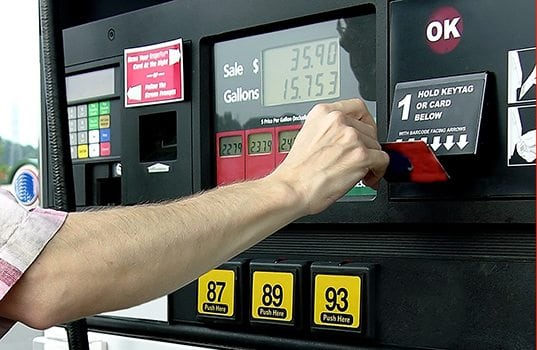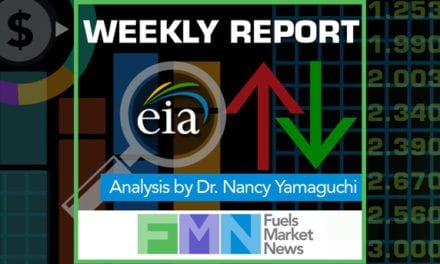From EIA’s This Week in Petroleum Release date: Feb. 25, 2015
On February 18, an explosion and fire occurred at the ExxonMobil refinery in Torrance, California. The Torrance refinery, the third-largest refinery in southern California, has about 20% of the region’s fluid catalytic cracking (FCC) capacity and is an important source of gasoline and distillate supply. Based on publicly available information, it can be estimated that Torrance produces about 117,000 barrels per day (bbl/d) of gasoline (about 15-20% of southern California’s supply) and about 50,000 bbl/d of distillate and jet fuel (about 10% of southern California supply).
Unplanned refinery outages can have noticeable impacts on liquid fuel markets, disrupting supplies of gasoline and distillate, particularly in regions that are tightly balanced, such as Petroleum Administration for Defense District (PADD) 5 (West Coast). While refineries make arrangements for alternative sources of supply during periods of planned maintenance to ensure that supply obligations are met, it sometimes takes days or weeks for markets to adjust to the sudden loss of production when an unexpected outage occurs. As a result, unplanned outages often result in a reduction in supply that causes prices to increase, sometimes dramatically. The severity and duration of these price spikes depend on how quickly the refinery issue can be resolved and how soon supply from alternative sources can reach the affected market. The recent incident at Exxon’s Torrance refinery in southern California is a case in point.
PADD 5 is relatively isolated from other U.S. markets and located far from international sources of supply, so the region is very dependent on in-region production to meet demand. Additionally, California’s more-restrictive gasoline specifications (CARBOB) limit the availability of supply from other markets. Mainland PADD 5 has three distinct supply/demand centers (Figure 1) and is geographically separated from other markets by mountains to the east and the Pacific Ocean to the west. As a result, moving product to southern California requires long lead times.
West Coast product markets reacted immediately to the potential loss of supply from the Torrance refinery. Spot prices in Los Angeles (LA) for CARBOB (California Reformulated Blendstock for Oxygenate Blending) gasoline increased $0.22 to $2.02 per gallon (gal) between February 17 and February 23. Spot CARBOB prices increased from $0.25 premium above the New York Mercantile Exchange (Nymex) Reformulated Blendstock for Oxygenate Blending (RBOB) front month futures contract, a standard pricing basis for gasoline, to $0.41 above over the same time.
This rapid price response is not unusual and is similar to what happened following past unplanned outages. During a series of West Coast supply disruptions in 2012, LA-CARBOB spot prices spiked higher to $1.16/gal over the Nymex RBOB front month contract (Figure 2). The 2012 spot price spikes, as well as price spikes during supply disruptions in California in 2008 and 2009, resulted in price increases that persisted for an average of eight weeks and took, on average, two weeks to be passed through to retail prices.
On February 23, average regular retail gasoline prices in California were $0.63/gal higher than the U.S. average, at $2.96/gal. California retail gasoline prices are typically $0.30-$0.40/gal above the national average retail gasoline price. PADD 5 as a whole had an average price of $2.76/gal.
The most immediate source of replacement product supply on the West Coast is regional inventories. As of February 20, diesel fuel inventories in PADD 5 are above the five-year average, and as a result supply is likely to be adequate assuming no additional disruptions or increases in demand. As of February 20, total PADD 5 gasoline inventories were just under 31 million barrels, sufficient to supply approximately 20 days of demand. However, EIA does not collect product inventories below the PADD level, and therefore does not know the inventory held in southern California. In addition, product exports from the region, to the extent they meet CARBOB specifications (and not all do), could be diverted to meet local demand.
Replacement supply could also reach southern California from a variety of locations outside the region, with differing logistical limitations and lead times. Potential sources of alternative product supply include refineries in northern California and the Pacific Northwest, the U.S. Gulf Coast (USGC), and imports.
Refineries in northern California as well as Tesoro’s Anacortes refinery and BP’s Cherry Point refinery in Washington State can produce CARBOB. In addition, some refineries along the U.S. Gulf Coast (USGC), a region that produces more gasoline than is consumed locally, and can also produce CARBOB. Resupply from these refineries, which would require a U.S. coast-wise compliant vessel, could take three to four weeks to reach southern California, taking into account both the time needed to manufacture and deliver CARBOB. CARBOB may also be available from SK Energy’s refinery in South Korea. Shipping product from Asia could take about four weeks.
EIA will continue to monitor West Coast product prices as the market responds to the unexpected loss of supply. As with previous disruptions, prices should stabilize as more information about the severity and duration of the expected outage becomes available.
For questions about This Week in Petroleum, contact the Petroleum Markets Team at 202-586-0786.










